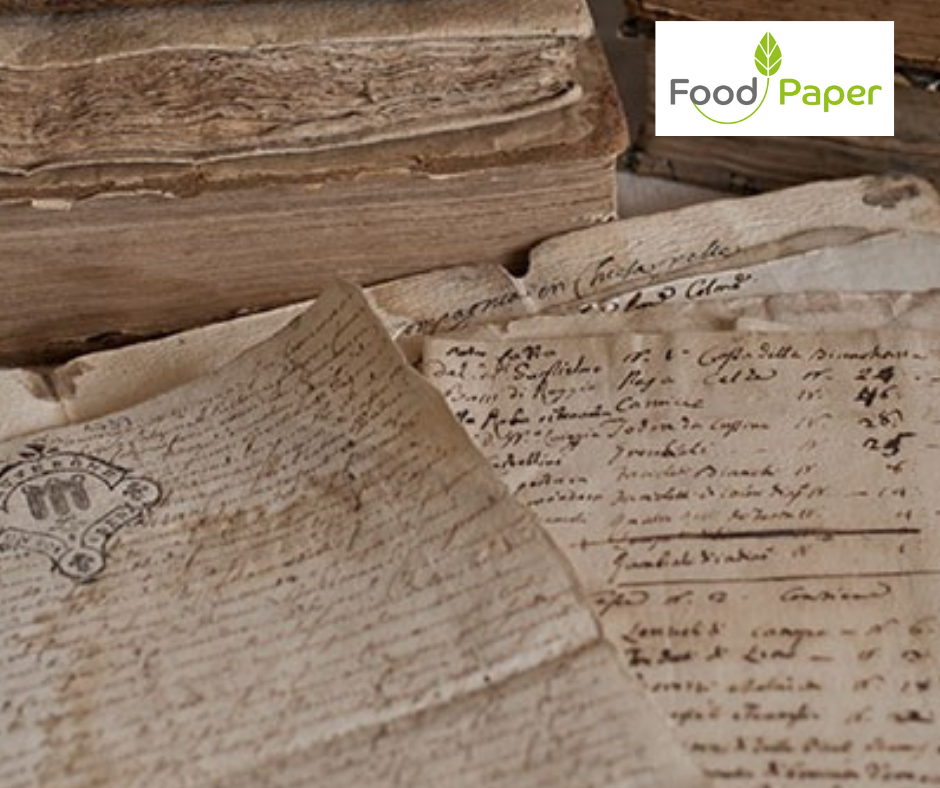The history of paper is inextricably linked with that of culture and science.
The spark that set off the invention of paper was simple but extremely significant.
Humans had an urgent need: to communicate certain information to each other in written form. The information had to be set on a lightweight and durable medium that was easily transportable.
The invention of paper allowed papyrus and parchment to be replaced with a material that was easier and, with the advent of new production techniques, cheaper to make.
Before paper as we know it existed, people communicated through pictures and symbols carved into tree bark, painted on cave walls, and marked on papyrus or clay tablets.
About 2,000 years ago, inventors in China took communication to the next level, crafting cloth sheets to record their drawings and writings. And paper, as we know it today, was born.
Paper was first made in Lei-Yang, China by Ts’ai Lun, a Chinese court official. In all likelihood, Ts’ai mixed mulberry bark, hemp and rags with water, mashed it into pulp, pressed out the liquid and hung the thin mat to dry in the sun.
During the 8th century, about 300 years after Ts’ai’s discovery, the secret traveled to the region that is now the Middle East. Yet, it took another 500 years for papermaking to enter Europe.
It wasn’t until the 11th century that paper arrived in Europe, with the Arab conquest of Sicily and Spain. However, paper was quickly considered an inferior-quality material compared to parchment, so much so that, in 1221, Holy Roman Emperor Frederick II prohibited its use for public documents. Rice starch, in fact, was an attractive food source for insects, which meant sheets of paper did not last long.
The history of paper owes much to the papermakers of Fabriano, a small town in the Marche region of Italy, who started producing paper using linen and hemp in the 12th century. By using new equipment and production techniques, these papermakers introduced important innovations:
They mechanised rag grinding by using hydraulic hammer mills, significantly reducing the time it took to produce pulp.
They started gluing sheets with gelatine, an additive that insects didn’t like.
They created different paper types and formats.
They invented watermarking.
Watermarking involved using metal wires to add decorations to paper which became visible when the sheet was held up to the light, allowing hallmarks, signatures, ecclesiastical emblems and other symbols to be inserted.
Then, with paper easier to make, paper was used for printing important books, bibles, and legal documents.
England began making large supplies of paper in the late 15th century and supplied the colonies with paper for many years.
The industrial manufacture of paper began in the 19th century with the expansion of mass-circulation newspapers and the first best-selling novels, which required enormous quantities of cheap cellulose.
In 1797, Louis Nicolas Robert created the first Fourdrinier machine, which was able to produce a 60-cm-long sheet. As demand for papermaking rags outstripped supply, alternative materials were sought, like wood pulp.
With the development of new techniques for extracting fibres from trees, the price of paper fell dramatically, and paper soon became a product of mass consumption. In Britain alone, paper output soared from 96,000 tonnes a year in 1861 to 648,000 tonnes in 1900.
Once again, the history of paper and the history of humankind were closely intertwined: with the spread of cheap paper, books and newspapers became accessible to all, leading to an explosion of literacy among the middle classes. But it wasn’t until the turn of the century that paper would be employed for other uses, like toilet and wrapping paper, toys and interior decoration.




